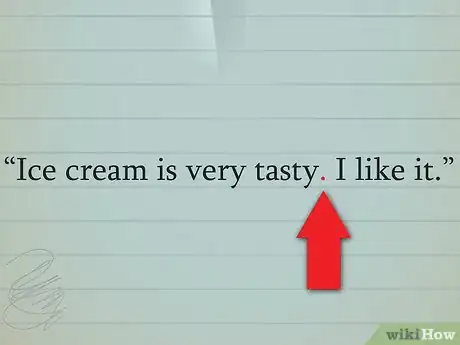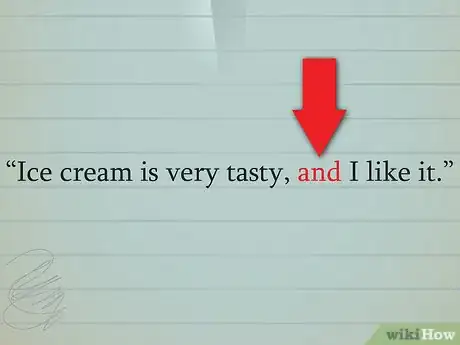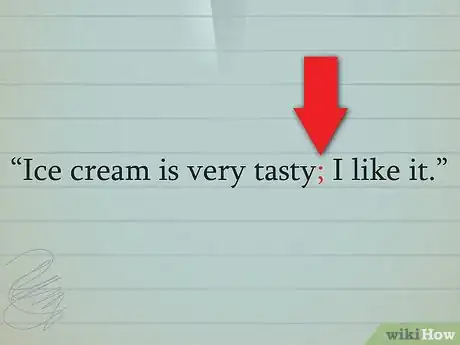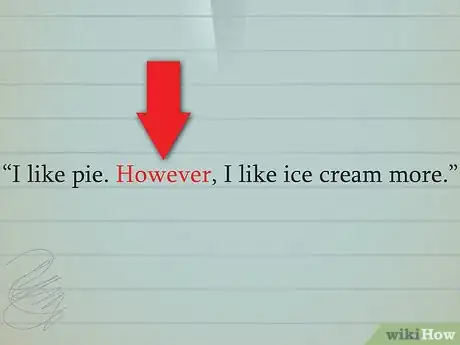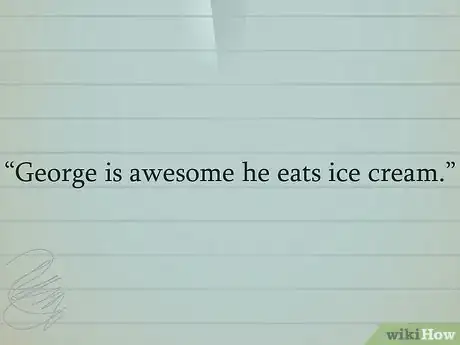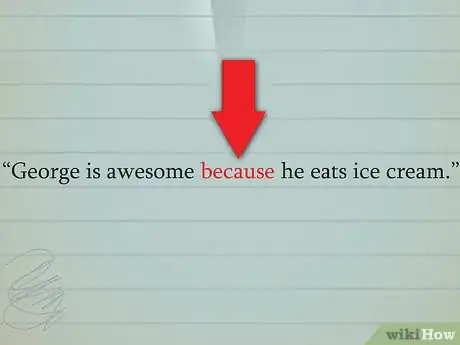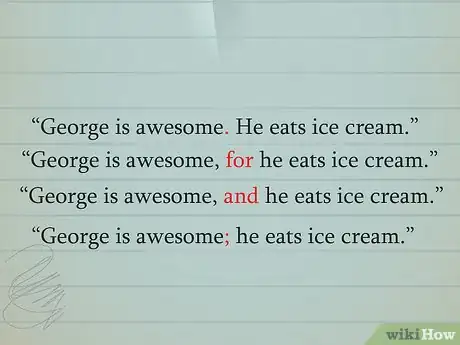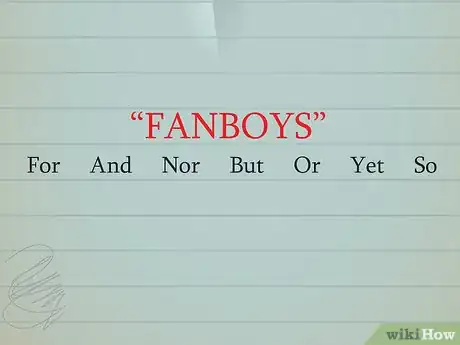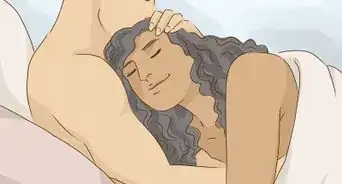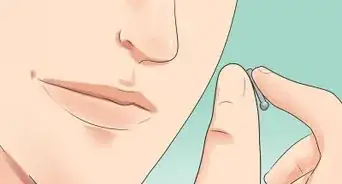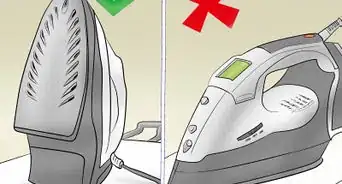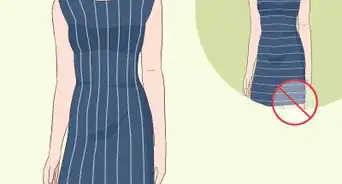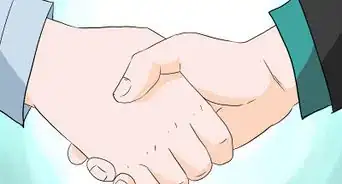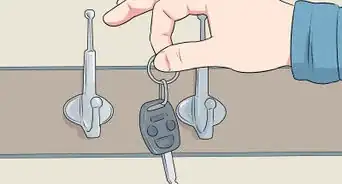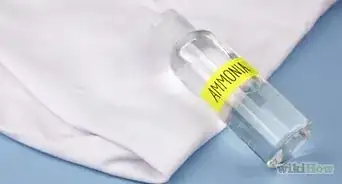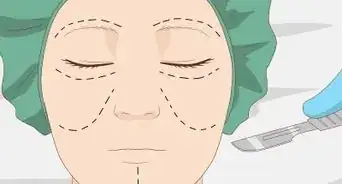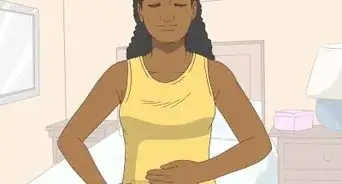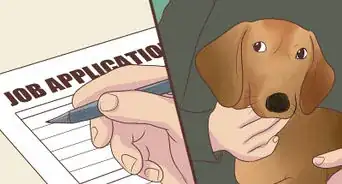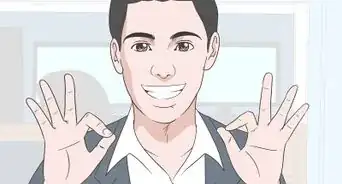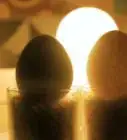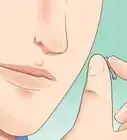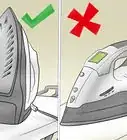wikiHow is a “wiki,” similar to Wikipedia, which means that many of our articles are co-written by multiple authors. To create this article, volunteer authors worked to edit and improve it over time.
This article has been viewed 21,636 times.
A run-on sentence has two or more independent clauses that are not connected properly. An independent clause is one that has a subject (a noun or pronoun or something acting as a noun, a person, place, or thing) and a verb (the action). It can stand alone, and it is a complete thought. A run-on, then, is when two independent clauses are smashed together without proper punctuation or wording. It is not just an extra-long sentence. In fact, very long sentences can be perfectly correct grammatically, as long as they are properly punctuated. Two independent clauses need to be separated by a period, question mark, or exclamation mark and a capital letter; a comma and a coordinating conjunction; or a semi-colon.
Steps
Correcting Comma Splices
-
1Familiarize yourself with the concept of a comma splice. One of the most common run-on sentences is a comma splice.[1] A comma splice is two independent clauses that are only separated by a comma, such as in the following example:
- “Ice cream is very tasty, I like it.”
-
2Correct the comma splice with a period or exclamation mark. You will also need to capitalize the letter following the added punctuation. End punctuation like periods or exclamation points work best if the ideas are separate. For example:
- “Ice cream is very tasty. I like it.”
-
3Fix the comma splice with a coordinating conjunction. Coordinating conjunctions are words meant specifically for connecting parts of a sentence. These words include: “and,” “but,” “for,” “yet,” “nor,” “so,” and “or.”[2] They all work a little differently.
- “And” shows that the two sentences are similar, meaning the second one is in addition to the first.
- “But” shows the second sentence is contradictory.
- “Yet” can also mean “in addition” or “even so.”
- “Or” presents two possible choices.
- “Nor” presents two impossible options. It also negates, like “but.”
- “So” means “therefore,” while “for” is saying that a reason for the first part of the sentence will follow.
- In our example, “and” makes the most sense to connect the sentences: “Ice cream is very tasty, and I like it.”
-
4Use a semi-colon to get rid of the comma splice. Semi-colons work well if the ideas are closely related, and a conjunction doesn’t make as much sense. A semi-colon works fine in this situation, especially since conjunctions can change the meaning of the two sentences:
- “Ice cream is very tasty; I like it.” Normally, you don’t use a capital letter after the semi-colon, but in this case, we of course have to capitalize the word ‘I’.
-
5Don’t be fooled by words like “however.” Unless the word is a coordinating conjunction, it cannot be used with a comma to split two independent clauses. For instance, you shouldn’t write: “I like pie, however, I like ice cream more.”
- “However” is not sufficient to connect the sentences. Use one of the above methods to fix it: “I like pie. However, I like ice cream more.”'
Fixing Fused Sentences
-
1Familiarize yourself with the concept of fused sentences. Fused sentences are two independent clauses strung together with no punctuation.[3] For instance, the following is a fused sentence:
- “George is awesome he eats ice cream.”
-
2Use a subordinating conjunction to fix fused sentences. A subordinating conjunction turns an independent clause into a dependent clause. Subordinating conjunctions are words like “because,” “as,” “if,” “although,” and “since.”
- Let’s look at our example. The second sentence could be turned into a dependent clause: “George is awesome because he eats ice cream.” “Because he eats ice cream” can’t stand alone, but it makes a complete thought together with the first sentence.
-
3Add one of the methods listed in the previous section. To correct a fused sentence, you can use all of the methods listed in the previous section. To add end punctuation to our example sentence, you would write:
- “George is awesome. He eats ice cream.”
- To add a coordinating conjunction, you would write: “George is awesome, for he eats ice cream.” or “George is awesome, and he eats ice cream.” Notice how different coordinating conjunctions can change the meaning of the two sentences; they show how the sentences are related.
- To add a semi-colon you would write: “George is awesome; he eats ice cream.”
Identifying Run-On Sentences
-
1Read each sentence in your paper. Consider if each one only has one complete thought or more than one. For sentences with more than one complete thought (or independent clauses):
- Is it separated by a comma only? That is a run-on that needs to be fixed.
- Does it not have any punctuation at all? That is a run-on that needs to be fixed.
-
2Try saying your sentences out loud as you write. This may help you identify when you have more than one complete thought in the same sentence.
-
3Check that each sentence has an independent clause. Don’t forget to look for the subject (what is doing the action) and the verb (the action), which will help you identify independent clauses.
-
4Use an acronym to help you remember how to fix run-on sentences. Remember, the four ways to fix run-on sentences are by adding end punctuation, using a comma and a coordinating conjunction, using a semi-colon, or by turning one of the independent clauses into a dependent clause with a subordinating conjunction.
- If you have trouble remembering the coordinating conjunctions, use the acronym “FANBOYS”: “For,” “And,” “Nor,” “But,” “Or,” “Yet,” “So.”[4]

